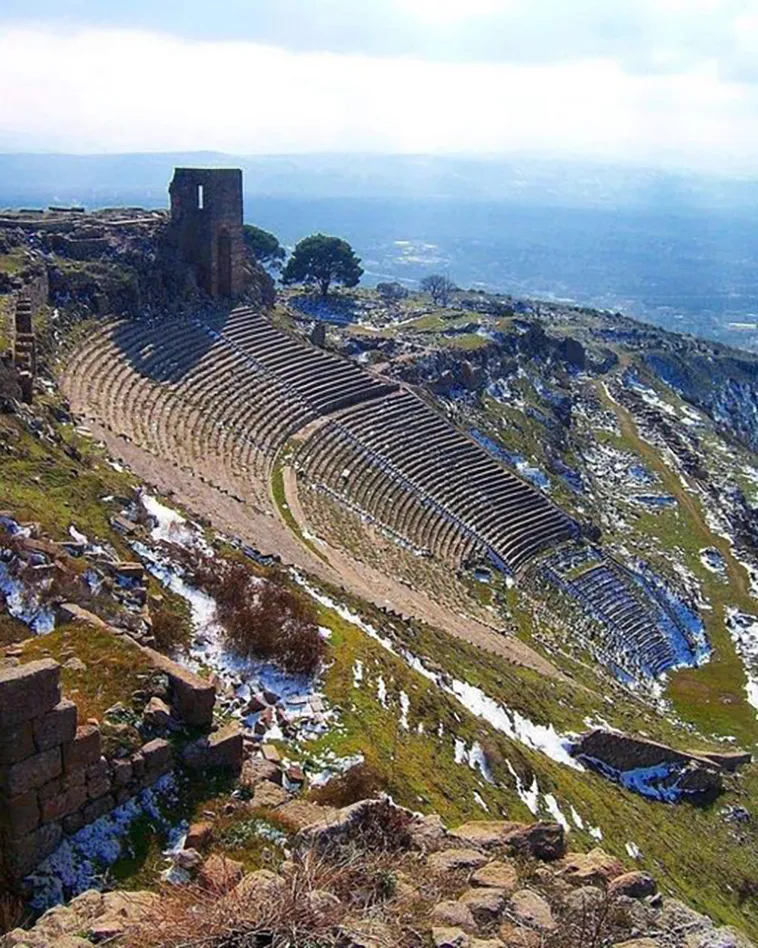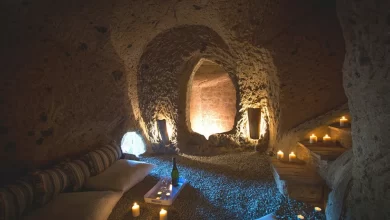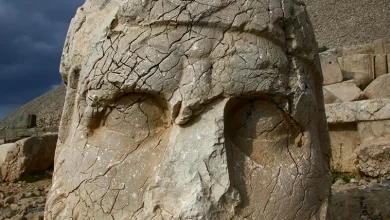Spectacular Ancient Theatres of Greek Roman Antiquity
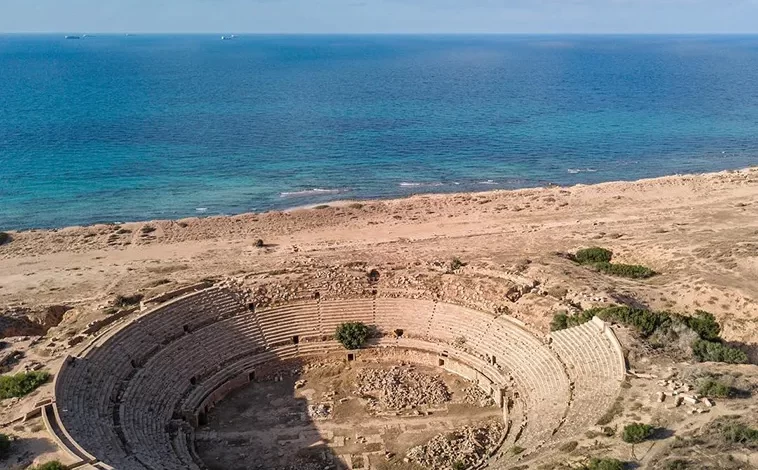
Some of the best-preserved and most amazing ancient theatres of Greek and Roman antiquity.
The Amphitheatre of Leptis Magna
Located in modern-day Libya, Leptis Magna was founded by the Phoenicians in the 10th century BC and became part of the Roman empire after the defeat of Carthage in 146 BC. Under Roman rule the city prospered and became a major trading post. Leptis Magna was abandoned in 523 AD after it was sacked by a Berber tribe and quickly reclaimed by the desert. Having been covered in desert sand for centuries it contains one of the most spectacular and unspoiled Roman ruins in the Mediterranean. The Roman amphitheater of Leptis Magna dates from 56 AD and lies about a kilometer east of the city center. It was capable of seating 16,000 spectators. Unlike most Roman amphitheaters, it is built below the ground.
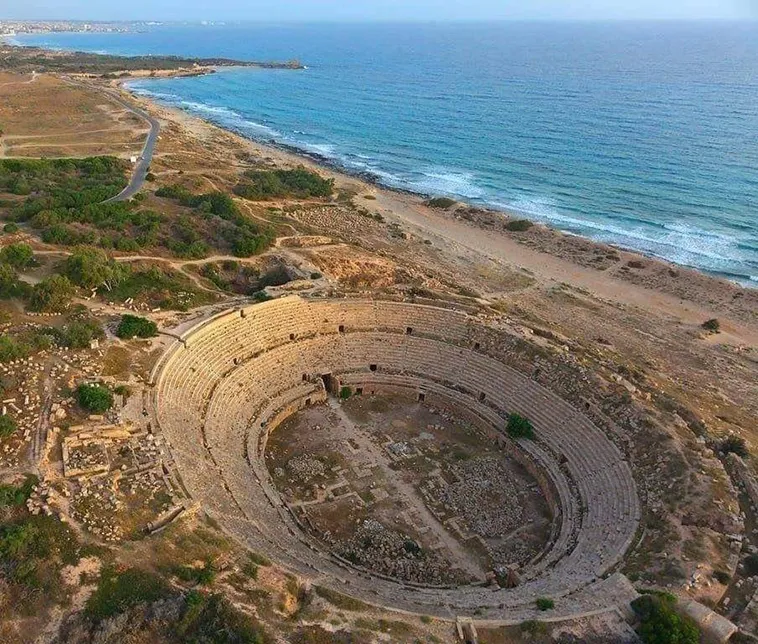
The Acropolis of Athens and the Odeon of Herodes Atticus
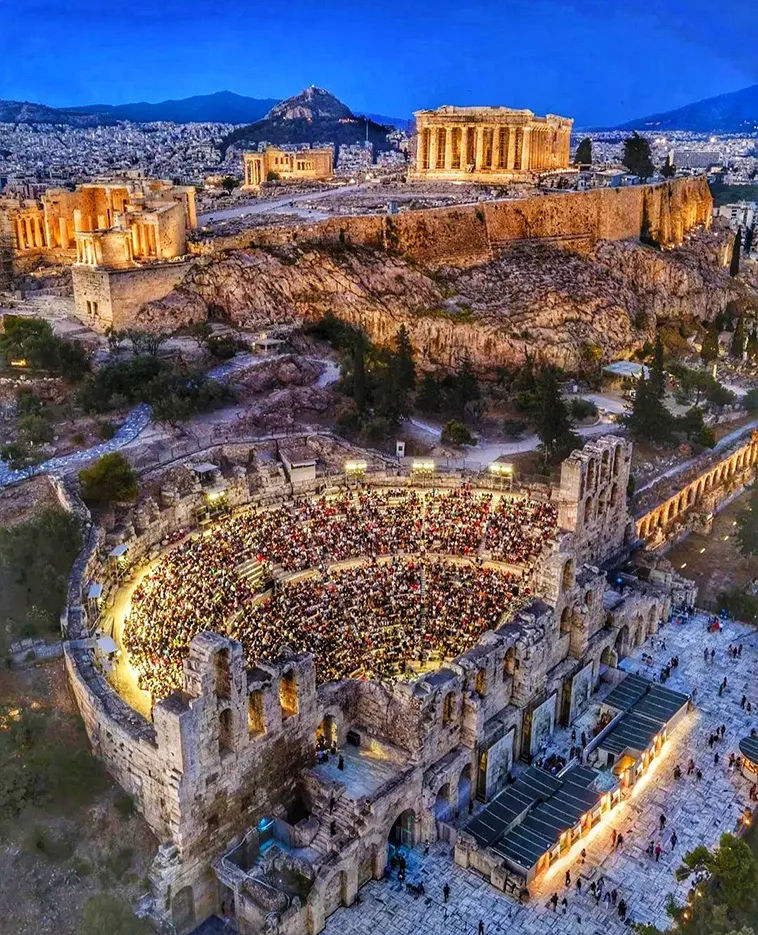
Roman Theater at Sabratha, Libya
Theatre, capacity of 5,000 people, was constructed of local sandstone with covering and ornamentation of stucco. The whole stage structure was protected by a ceiling sloping down toward the back, supported by wooden beams.
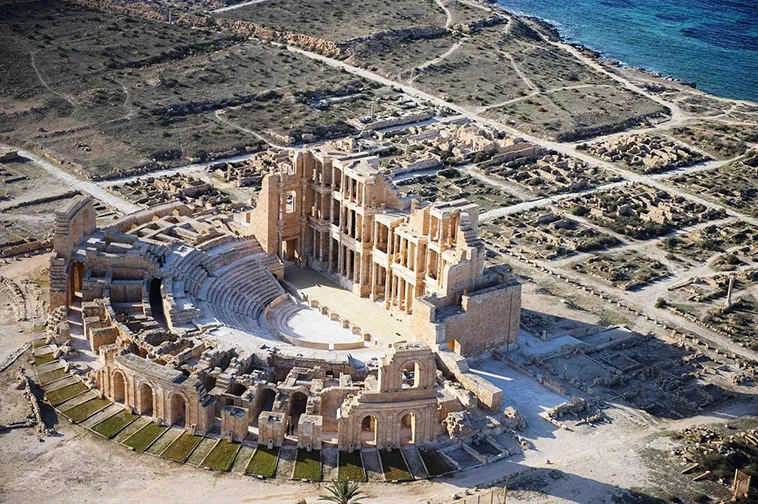
The Roman Amphitheatre of Catania in Sicily, 2nd century CE
The Roman Amphitheatre of Catania in Sicily, 2nd century CE. The city of Catania has been buried by lava a total of 17 times in recorded history, and in layers under the present-day city are the Roman city that preceded it, and the Greek city before that
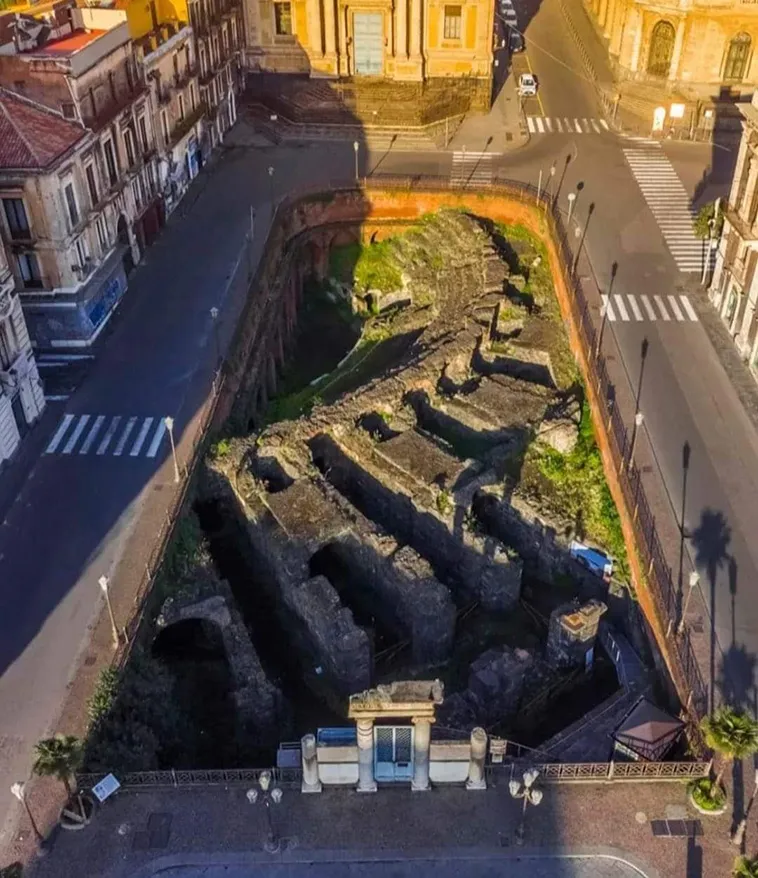
Roman theatre in Palmyra, Syria, II century AD.
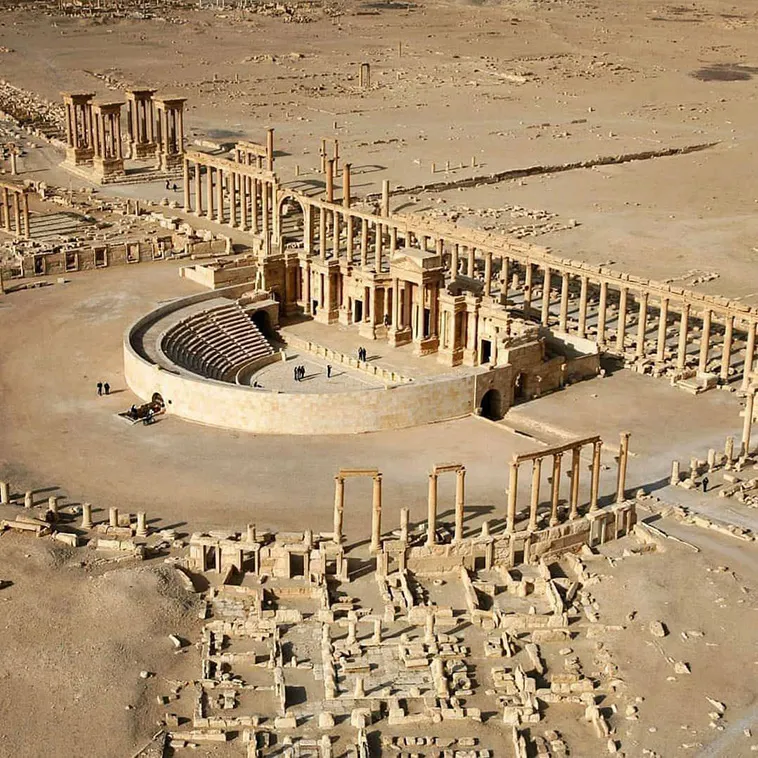
Aspendos Theater, Antalya, Turkey
The theatre in Aspendos is considered to be the best-preserved theatre of antiquity. The Roman builders of this structure managed to express the state of ideal balance between the auditorium and the skene building and, what’s more, the whole theatre matches perfectly into the landscape.
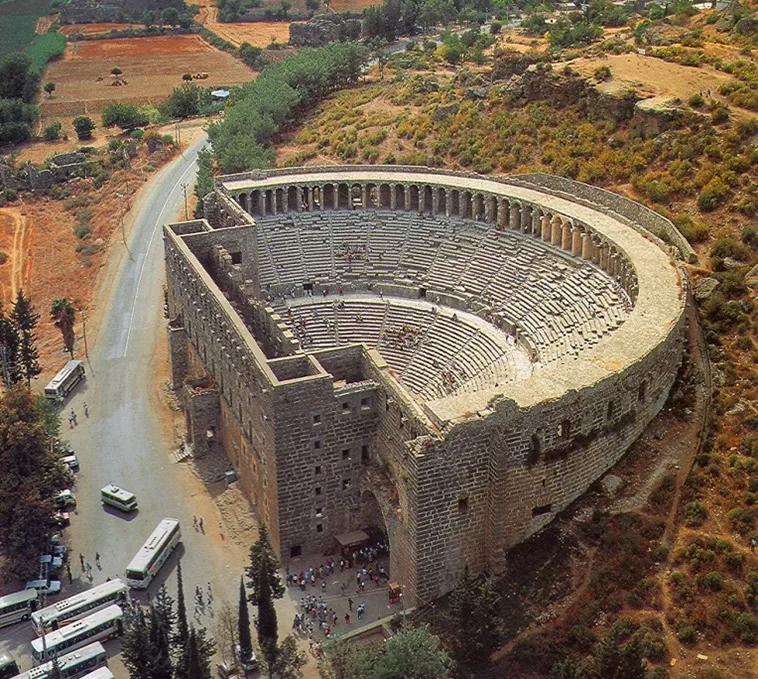
Ancient Theatre of Epidaurus, Greece
The Ancient Theatre of Epidaurus, Peloponnese: The Ancient Theatre of Epidaurus is regarded as the best preserved ancient theatre in Greece in terms of its perfect acoustics and fine structure. It was constructed in the late 4th century BC and it was finalized in two stages. Originally the theatre had 34 rows of seats divided into 34 blocks by stairs and walkways.
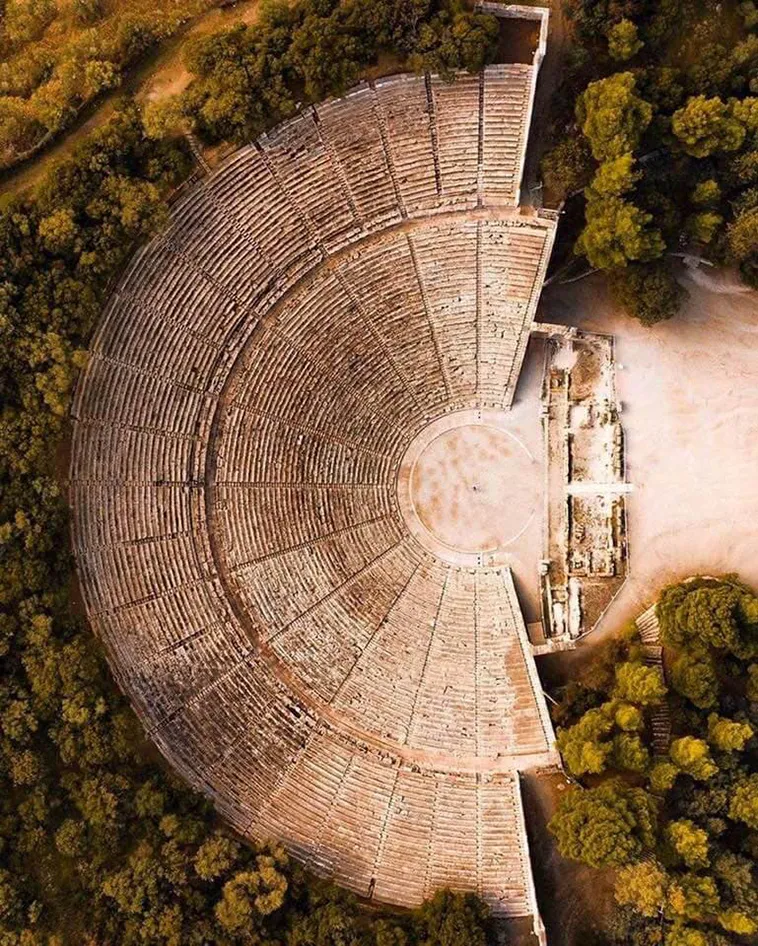
Ephesus Theatre, Izmir, Turkey
At an estimated 25,000 seating capacity, the theatre is believed to be the largest in the ancient world.
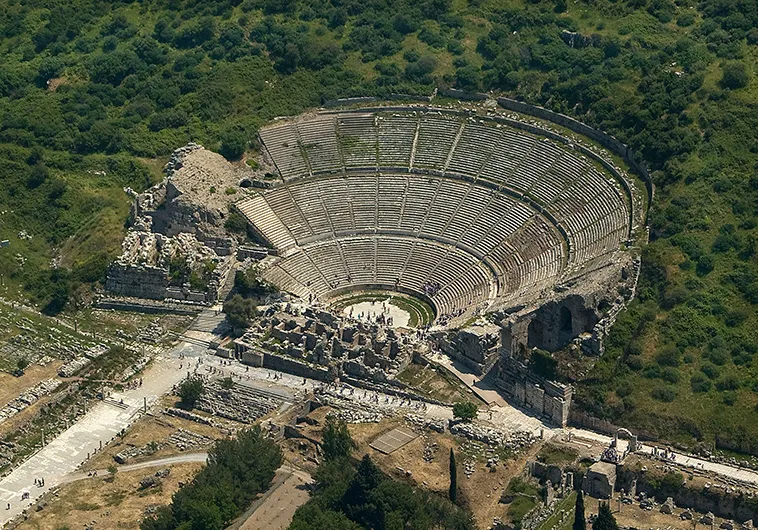
The Ancient Greek theater of Taormina built in the third century B.C.
The theater is divided into three parts: the scene, the orchestra, and the auditorium. The stage, which is in front of the auditorium, is the place where the actors played According to the experts’ reconstruction, this part was decorated with two rows of columns, one on top of the other. The stage has also three large arched openings at a symmetric distance from each other, and six niches placed three on the right and three on the left of the central arch. On the stage, there are the remains of six column bases and four Corinthian columns that were raised after 1860.
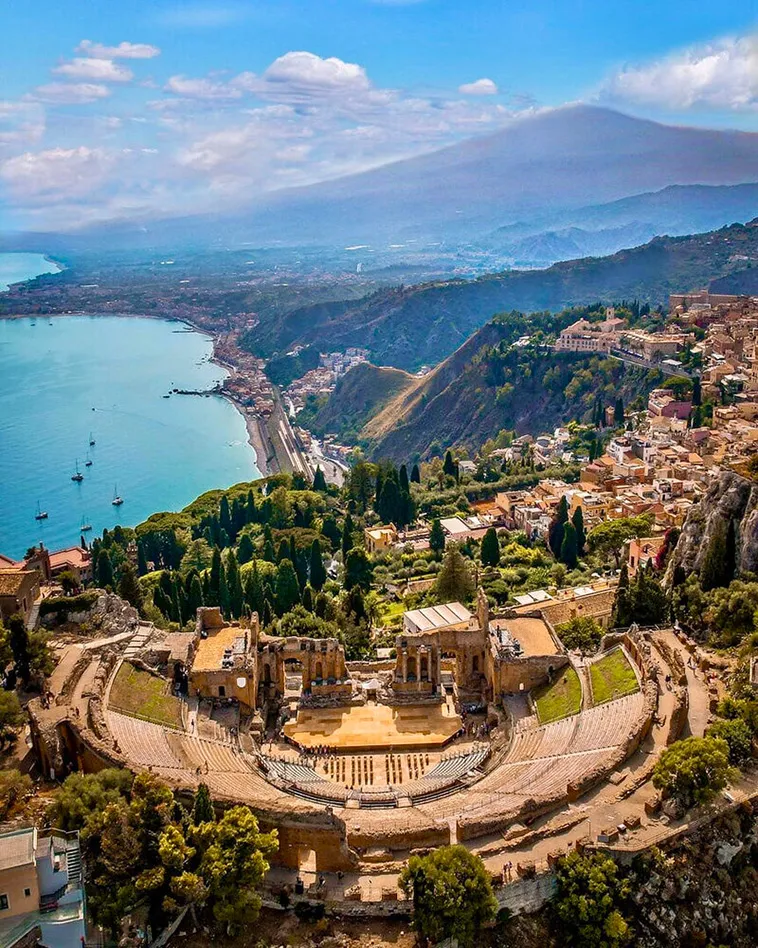
Side Ancient Theater, Antalya, Turkey
The theatre was built in the middle of the 2nd century AD, on the site of an earlier, Hellenistic, theater. It represents the Roman type of theaters, because it was built on the foundations supported by the barrel vaults. However, the influence of Greek architecture is also visible, for instance in the shape of the audience which is a sector of a circle greater than 180 degrees. The outer façade of the theater was once two-storied, but only its lower part, decorated with arcades, is now visible.
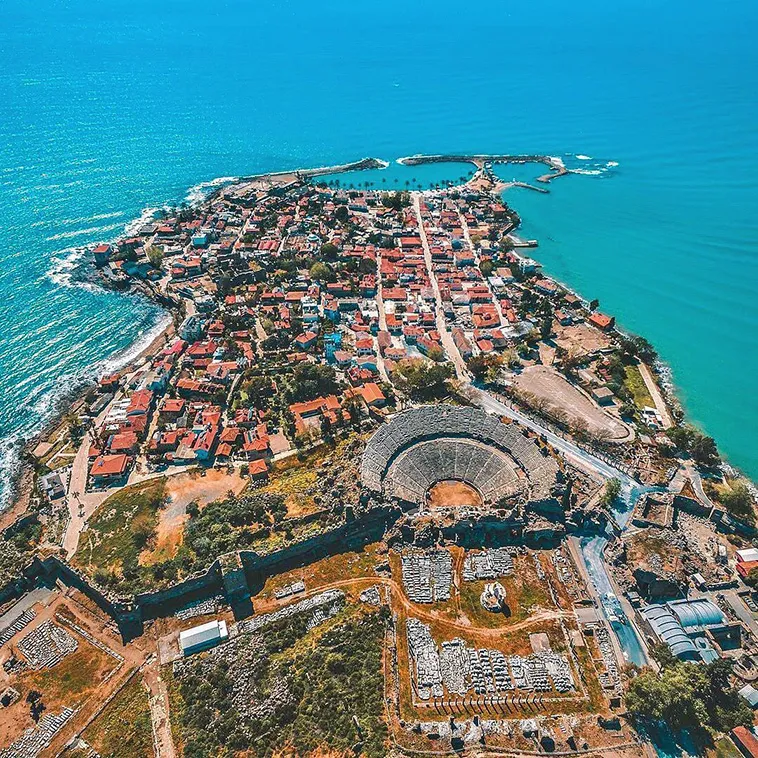
Roman Theatre of Orange, France
The Roman Theater of Orange in France is a well-preserved theatre built in the 1st century AD for watching theatrical performances. After the Roman Empire declined the theatre was closed by an official edict in 391 AD as the Church opposed what it regarded as uncivilized spectacles. The ancient theatre was restored in the 19th century.
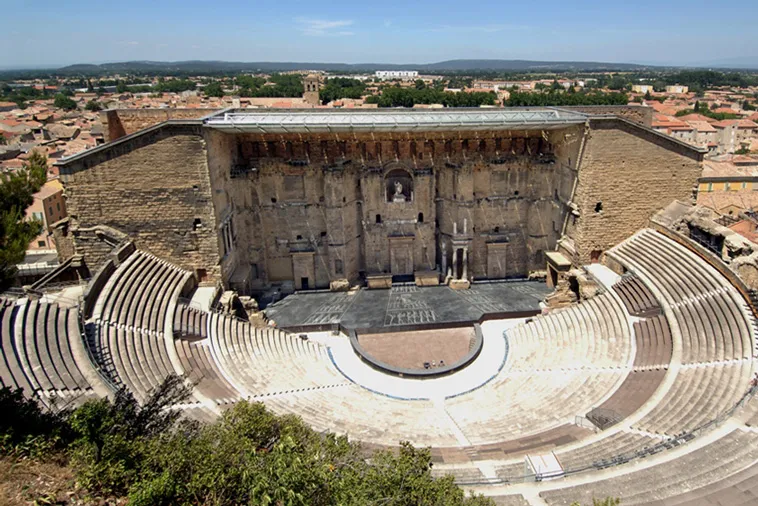
Roman Theatre of Merida, Spain
The Roman Theatre of Merida in present-day Spain was built in 16 BC by order of Agrippa, a general and friend of emperor Augustus. The ancient theatre could house up to 6,000 spectators. In later centuries the theater underwent several restorations which introduced new architectonic elements and decorations. The structure was restored to its current state in the 1960s-1970s.
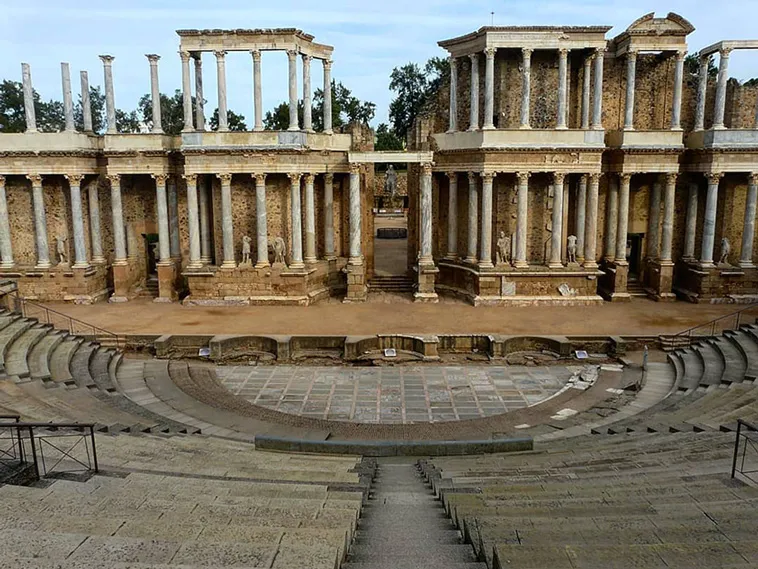
Delphi Theatre, Greece
The ancient theatre of Delphi in Greece was built on a hill giving spectators a view of the entire sanctuary and the spectacular landscape below. It was originally built in the 4th century and could seat 5,000 spectators.
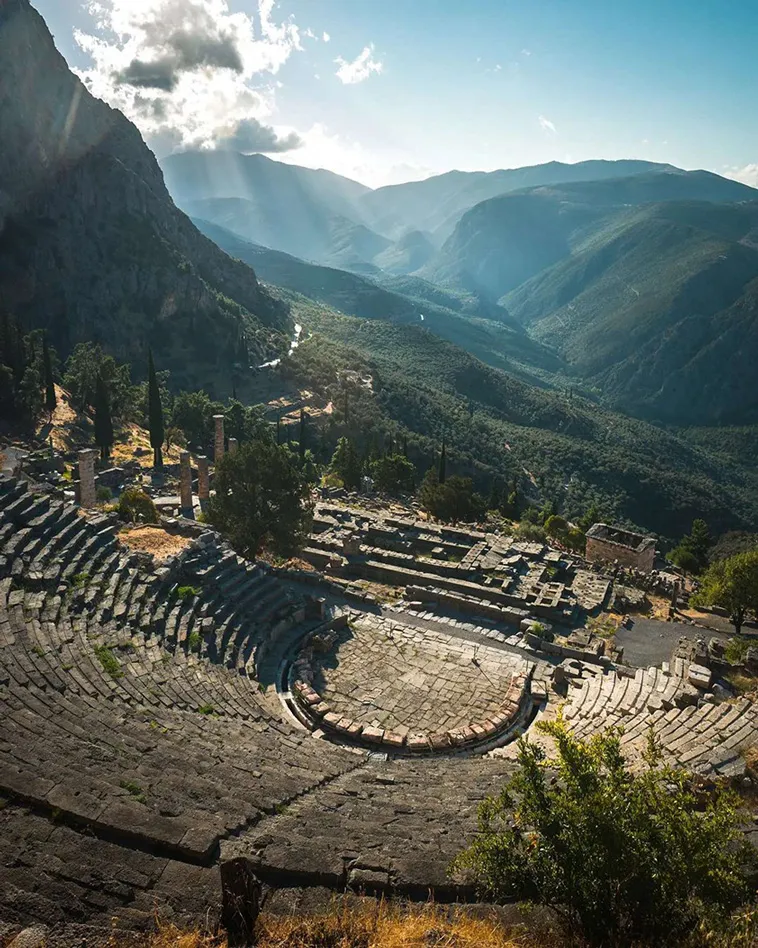
The Pergamon Ancient Theater is the world’s steepest theatre with an angle of about 70 degrees. The Hellenistic theatre is said to have had seating capacity of 10,000 and the cavea (seating area) was the steepest in the ancient world.
The magnificent Hellenistic theatre at Pergamon is the centerpiece of the acropolis of the ancient city, which is located just north of the modern-day town of Bergama on Turkey’s northern Aegean coast.
It is thought that it was built in the 3rd century BC, during the time of King Eumenes-II, and some additions were made during the Roman period. Researches show that there is another theater built before in the same place of this theater. Some of the wall remains from the old theater that was built can still be seen today.
There are 80 steps from the top to the stage and its height from the stage to the top is 36 meters. The lower part of the theater consists of seven pieces with neatly made staircases with a width of 74 cm so that the audience can easily enter and exit their seats; the upper parts are divided into six parts.
In the lower row of the lowest section, in the middle area facing the orchestra, there is a royal lodge made of marble. In the Hellenistic Age, there was a stage consisting of a wooden platform that could be disassembled and removed, and a stage building that was easily dismantled and removed.
